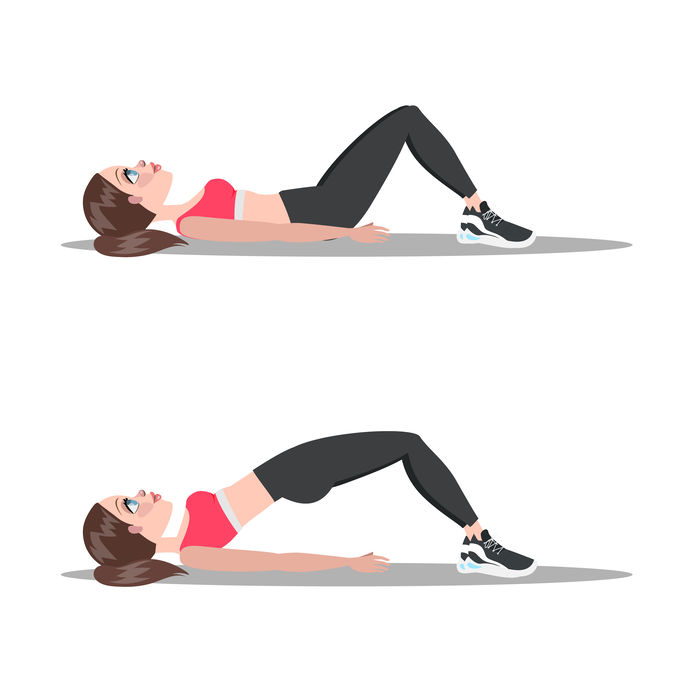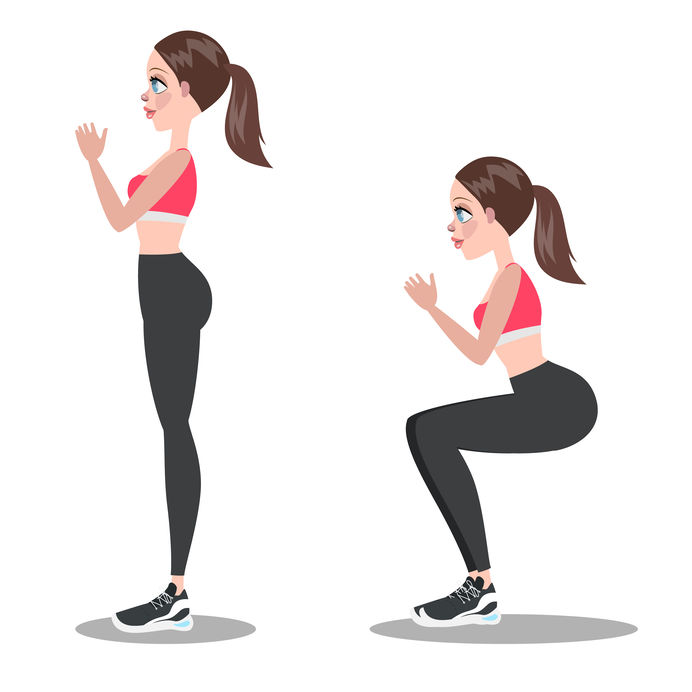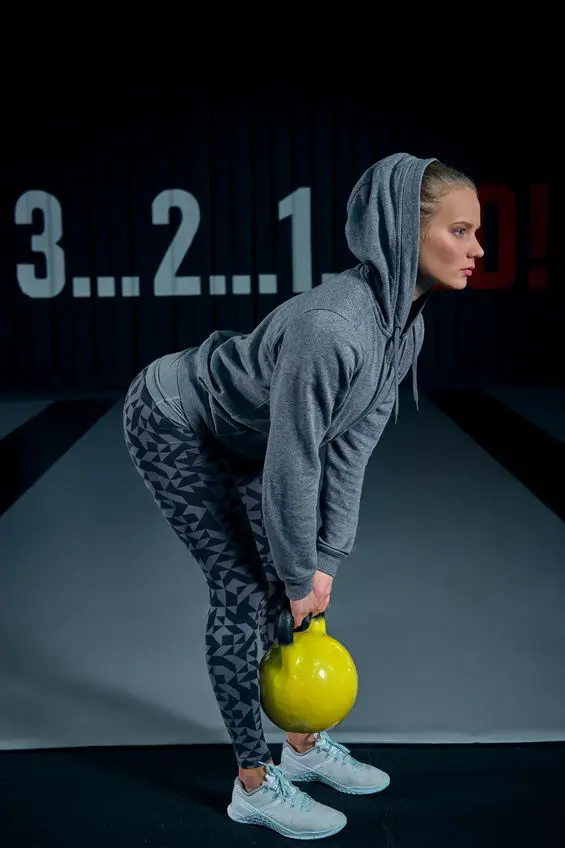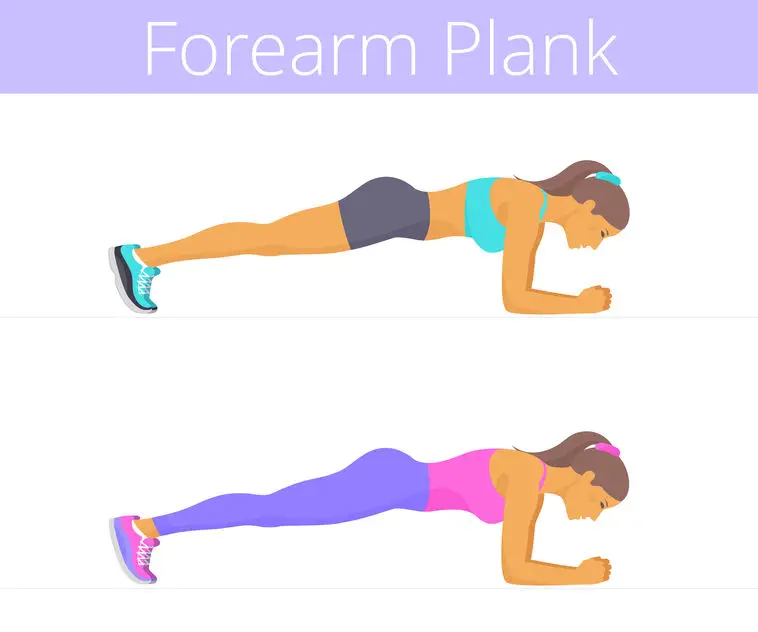A gymnastics aerial is a required skill in gymnastics as you reach higher levels. But how do you do a a cartwheel without using your hands? In this post we’ll show you 5 simple steps you can follow to mastering this skill.
Five Steps To Mastering The Gymnastics Aerial
- Improve Your Base Strength
- Perfect Your Needle Kick
- Use Sliders On A Raised Panel Mat
- Start With An Aerial From A Raised Surface
- Perform An Aerial On Tumbling Floor
Going from a regular cartwheel to an aerial cartwheel is a big step. If you follow each of these steps in order you’ll speed up the process and master this skill.
Step 1 – Improve Your Base Strength
To master the gymnastics aerial you will need some base strength. The following 5 exercises are designed to develop the muscles you’ll need most to perform an aerial. It might take you a few months to build up enough strength to move on to the next step. Remember to listen to your body and don’t move to fast.
Hip Lift

The Hip Lift is a simple exercise where you’ll lay on your back with your heels tucked towards your butt. You’ll drive your heels into the ground while squeezing your glutes. Be sure to relax your neck and keep your shoulders firmly on the ground.
Body Weight Squats

Simply stand in an upright position and slowly lower yourself as if you are sitting into a chair. Come back to a standing position to complete 1 rep. Don’t let your knees extend over your toes.
A body weight squat is an essential strength training exercise where the trainee squats down and then raises their butt up again. During the decline of a squat, both the thigh and hip joints flex, with the knee joint extending slightly further than the ankle in the descent. This is what is commonly known as a power squat.
Kettlebell Deadlift

To perform a kettlebell deadlift hold the kettlebell slightly below your knees. Keep your back straight and engage your glutes as you stand upright. At the top position your should keep your core and upper body strong. Squeeze the glutes as you finish. Then slowly lower the weight to below your knees for your next rep.
Lunges

Stand straight while engaging your core muscles. Slowly take 1 step forward and lower your hips until your front leg is 90 degress. Raise us and complete your first rep. Never extend your knee past your toes on your front leg. If you have knee paid try a reverse lunge stepping back instead of forward.
Lunges are a great lower leg exercise for runners or people who just want to get into better shape. Lunges will work your quadriceps, hamstrings, as well as the calves which all help with running. It can also strengthen your hips. Basically the movement done in lunges involves flexing and extending at the same time. When doing this exercise, it is important to have good posture as this exercise works out a lot of different muscles in the body. The main muscle that does the lifting is the Quadriceps.
Planks

Get into a push up position and slowly lower yourself onto the forearms. Squeeze your core and hold as still as possible. Build up on your planks and try to hold this position for longer and longer periods. Start with 30 seconds and then build into 1 minute, 2 minutes and beyond.
The plank exercise movement has been around since Joseph Pilates introduced it in the 1920’s. It is a great way to strengthen the core muscles, lower back and shoulders. As a bonus, when you learn how to do a plank correctly, you also strengthen the glutes, upper back, chest and abs. In addition to assisting with your lower back and shoulders, the plank is also extremely effective at helping you develop strength in the forearms, calves, and hamstrings.
Step 2 – Perfect Your Needle Kick
Here’s a short video from Erica Lin on how to do a needle kick. This is definitely a pre-requisite for performing an aerial.
This video has a lot of stretching before you start to perform the movement which will help your overall gymnastics skills. The short video is only 5 minutes long. If you ran through this routine 3-5 times a week you will get results fast.
Needle kicks are important for other gymnastics maneuvers so taking to master it with the correct fundamentals is important.
You can also add resistance to your needle kicks with bands or ankle weights. A little resistance can go a long way in building strength.
Step 3 – Use Sliders On A Raised Panel Mat
Tammy Biggs does a great job of explaining how to use sliders in this video. You will essentially be doing a cartwheel on an elevated panel mat with sliders under your feet.
In order to speed up your cart wheel you will essentially flick the sliders back as fast as far as you can. This will train you to increase your rotation speed.
Top gymnasts can launch the sliders 40 feet behind them. That’s some serious torque! So when you work on this skill really focus on flicking those sliders back. That movement will help you master this skill faster.
In order to mast the aerial you will want to increase your rotation speed as much as possible.
Step 4 – Start With An Aerial From A Raised Surface
Here’s a video of my daughter landing her first aerial from an elevated surface. In this video you’ll see we are using an air track as the elevated surface and then she lands down onto a panel mat.
You can think about this in steps and keep working your way down until you can do an aerial on a flat panel mat. gymnastics tumbling track or even grass.
Here’s a short list of “steps” you could follow if you have the equipment at home. You can create a lot of steps with just 2 panel mats as well. The aerial will be easy at first and then will get increasing harder as you progress.
- Air track down to a soft ground or panel mat. The air track gives you an extra bounce which makes the movement easier.
- Completely folded Panel Mat (4 sides thick) down to soft ground or flat panel mat.
- Panel mat folded in half (2 sides thick) down to soft ground or flat panel mat.
- Full aerial on an air track. The surface will be a level height but the bounce from the air track will make it easier. Some may find step 3 harder than this step..
If you are looking to purchase a gymnastics mat for your home check out this article where I covet it in more detail.
Step 5 – Perform An Aerial On Tumbling Floor
Once you make it through the steps above you are ready to attempt an aerial on a flat surface. Don’t start on a hard floor or concrete. And you probably shouldn’t ever attempt is on those surfaces regardless.
The best options would be a flat grassy area or a panel mat. Make sure you are extremely proficient on a bouncy surface like a gymnastics tumbling floor or air track before moving to the other surfaces.
Frequently Asked Questions About Gymnastics Aerials
Why Should I Master The Gymnastics Aerial
You might be wondering why is it so important to master the gymnastics aerial. If you want to reach higher levels in gymnastics you will absolutely need to master this skill.
What Apparatus Will I Need To Do A Gymnastics Aerial
When you get to the higher levels you’ll need to perform and aerial on the floor and also on the beam. To some extent the movements on vault are “aerialish” but a true aerial will be required for floor and beam.
What Level In Gymnastics Am I Required To Do A Gymnastics Aerial
The first time you’ll be required to perform an aerial in competition will be at level 6. This movement is required on the floor and not on the beam which will come later.
Conclusion
I hope you found this article valuable on your journey to mastering the gymnastics aerial. It is such a cool skill to learn and will help you move up in levels if you are a competitive gymnast. Don’t rush through the steps and always have a spotter nearby. Good luck on your gymnastics journey!

